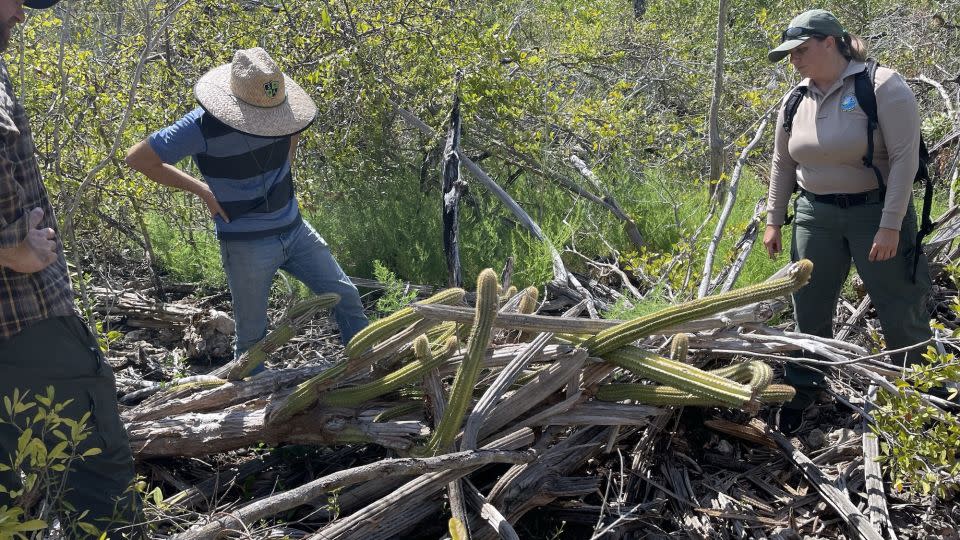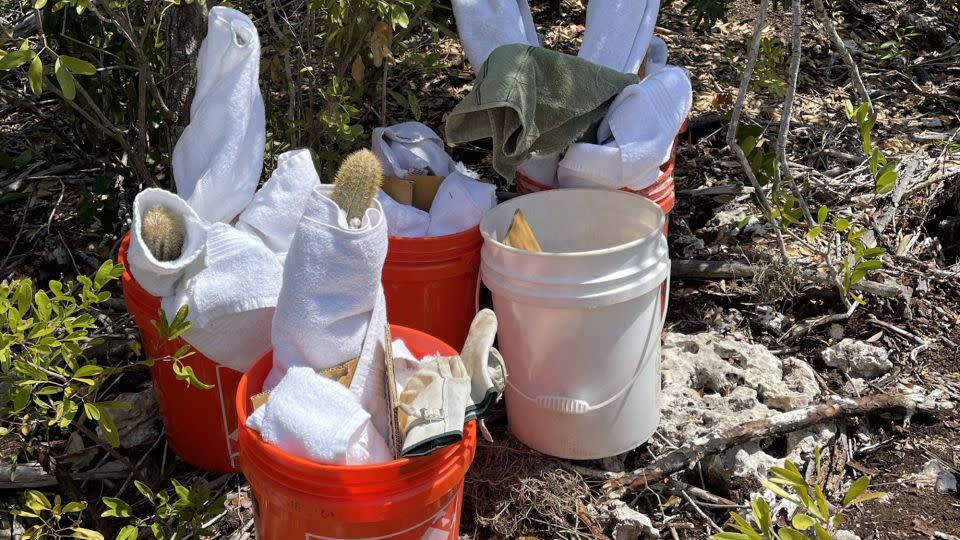Scientists say a unique plant has become the first species to be wiped out from the wild in the U.S. due to the combined effects of rising seas. It’s a bleak first but not the last, as scientists fear the plant’s extinction could be a “precursor” to other species as the climate crisis takes hold.
The combined effects of sea level rise, rising tides and intense storms have led to the extinction of the wild Key Largo tree cactus population in the Florida Keys, its only known location in the United States, according to a paper published this week in the Journal of the Texas Botanical Research Institute.
“This is just one example of what’s happening to dozens of species, and people need to understand that if we don’t do something, this loss will accelerate,” said George Gann, co-author of the study and president and director of the Regional Conservation Institute.
The Key Largo tree cactus still lives in parts of the Caribbean, including Cuba, Puerto Rico and the Bahamas, but the chances of it re-establishing naturally in the Florida Keys are basically “zero,” Gann said.
In 2011, about 150 individuals were present on a tidal rock barren atop a small limestone outcrop amid the abundance of mangroves at John Pennekamp Coral Reef State Park. But in 2015, researchers noticed that the cactus was dying at an alarming rate, the result of a single animal attack, plus its location in the low-lying Florida Keys, where most of it is just 5 feet above sea level.
The plant’s habitat was being inundated by saltwater from storms and high tides, made worse by rising seas. As fossil fuel pollution warms the planet, it is also warming and expanding the oceans, melting ice sheets and glaciers, gradually raising water levels.
Researchers reported that sea level around the Florida Keys is rising an average of 0.16 inches per year (about 8 inches since 1971).
“Too much salt is a stressful environment for most plants,” James Lange, a research botanist at Fairchild Tropical Botanical Garden in Miami and co-author of the study, told CNN.
Plants can withstand salty seawater for a few days, but when that period stretches to weeks or longer, “their structures are not prepared to cope with it because they can no longer take in fresh water — they can’t nourish their bodies.”

By 2021, after years of exposure, only a few cacti remained. Rather than let them die, the researchers chose to remove them from the wild. The last wild straggler was removed in 2023 because “it was clear that the region would continue to succumb to sea level rise,” the researchers said.
Gann told CNN that the species’ extinction in the United States is “indicative of a larger problem.”
Scientists say sea levels around the Florida Keys are projected to rise as much as 7 feet (2.1 meters) by the end of the century, leading to worse tides and ocean intrusion that could pose an existential threat to many other species.
“Unfortunately, the Key Largo tree cactus may be a harbinger of how other lowland coastal plants will respond to climate change,” said Jennifer Possley, lead author of the study and regional conservation director at Fairchild.
In South Florida, more than a quarter of native plant species are critically threatened with regional extinction, Possley said. These include the rare flowering plant Garber’s spurge, small-flowered lily thorn, small-fruited varnishleaf and Grisebach’s dwarf morning glory.
And it’s not just plants. The intrusive saltwater deprives local wildlife of clean drinking water and forces them to consume moisture-retaining plants like cacti, making the problem worse for threatened plants. To address this, biologists have had to create small freshwater ponds to help animals and plants survive.
But these fixes are only temporary. The amount of pollution already cooking the planet in the atmosphere is locking in decades of sea level rise, making it particularly difficult to protect biodiversity, researchers say.


The researchers rescued the last remaining cacti from the wild, wrapped them in towels for protection, and moved them to an off-site greenhouse to ensure the plants’ survival.
There are plans to reintroduce the species to the Keys, but researchers say finding a suitable habitat that can cope with rapid changes in climate is “challenging.”
As a result, the Key Largo tree cactus, which has become so endangered by the climate crisis, may have no future in the wild.
For more CNN news and bulletins, create an account at CNN.com